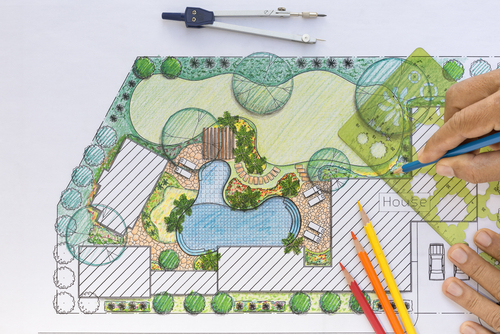How do we give our garden the care that it deserves? Garden maintenance is, regrettably due to our busy lifestyles, something we all neglect. Probably one of the most mysterious things that sometimes happens in your garden is when a plant gets a disease. How did it happen? Will, it spread? Can all my plants die? How to dispose of it? An essential thing to understand about disorder avoidance is something known as the disease triangle. Infection can happen when three things match: You own a plant that can find sick, a pathogen (like a fungus, bacterium, or virus) that may trigger the plant, along with environmental conditions (like humidity or drought) which promote the disease. The disorder won’t happen – therefore, prevention involves knocking out at one side of their triangle if any of these things aren’t present. As opposed to awaiting a problem to appear into your garden, consider the very best defense against disorder for always a superior offense. Here are 6 ways you by which you can eliminate a minimum of 1 side of this disorder triangle and keep your garden maintenance up to date.
Scrutinize plants before buying
The natural and simple way to limit illness will be to stay away from introducing it in the first place. Getting a disorder with a plant that is new isn’t the sort of bonus that any people wants. Indeed, one of the most challenging things during garden maintenance is what a plant should appear to be, which makes it difficult to know if it is ailing. It’s a fantastic idea to collect a few novels, magazines, and catalogs that show what a healthier specimen looks like. Do not obtain a plant having stains, rotted stalks, or pests. These issues can quickly spread to your healthy plants and therefore are sometimes hard to get rid of once established.
Watering
– Maintain flowering beds moist. Water only 1 to 2 times each week.
– It’s well to water plants at the sunset or early in the sunrise, even when the soil is calmer since less will disappear compared to throughout the day’s heat.
– Plant or watering leaves heads to Prevent Water Mold formation lightly to prevent damage.
– Through depending on the way, the soil feels, can enable less or more. With water management, they can modulate the amount of moisture from the soil so If you’re away a lot try out an irrigation system.
Weeds
– To reduce the development of weeds, plant beds gradually to diminish the distance available for weeds to grow.
– Using Compost prevents weed seeds from developing
– Eliminate the origin, if attacking existing weeds. Reach the roots by using a trowel that is weeding.
Keep an eye on your bugs
Damage to plants is much more than just merely cosmetic. Bacteria and viruses frequently may input a plant also that is provided by bug damage. Some insects actually function spreading them out of 1 plant into another. Aphids are among the most common carriers and disperse impatiens necrotic spot virus, and this has become a severe problem for producers over the previous ten years. Aster yellows is a disorder carried by leaf-hoppers, and it has a massive array of host plants. Pest attacks are different way to put a plant under stress, which makes it less inclined to fend off diseases.
Apply Correct Fertilizer
When pruning plants because too much of almost any fertilizer can burn up off roots, reducing their capacity to consume water you need to take caution. This, then, creates the plants more susceptible to stress from cold, drought, and heat. Plants can be badly affected by leaf spots, while a plant could fight off diseases. An overabundance of a particular nutrient is one other way to put stress on a plant.
By finding a dirt test through your local extension agency, you will be provided with information about nutrient levels on your soil. Without it, any feeding might result in not enough of any other or even too much of one nutrient and your plants is very likely to be more guesswork on your area.
Fill in space with grass and groundcovers
Open spaces that are fewer mean opportunities for weeds to take root. Some grasses can add variety, and clump without dispersing too wide. Select the right varieties; some will spread dynamically. Consider ground cover, rather than grass, mainly if your lawn is patchy. You can force outcomes that are better and will save yourself time pruning. Patchy lawns typically mean bud is currently combating with absence or tree roots of sun. Ground-cover is an excellent alternative to grass.


